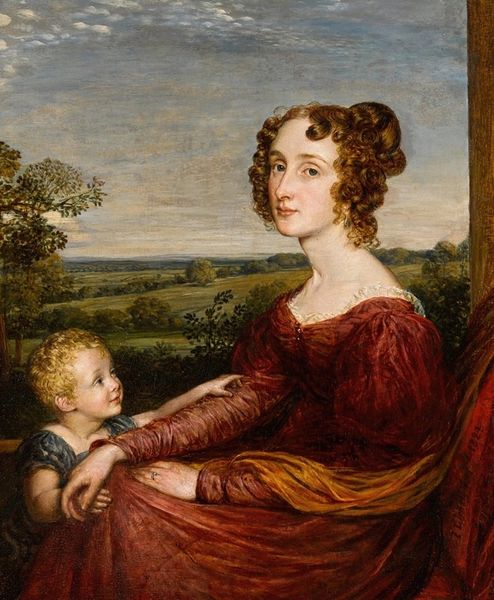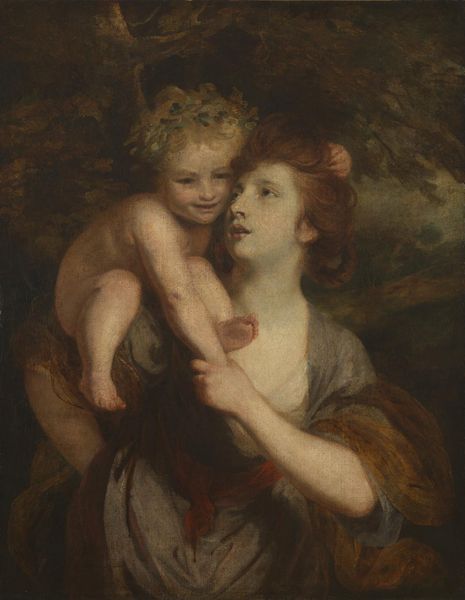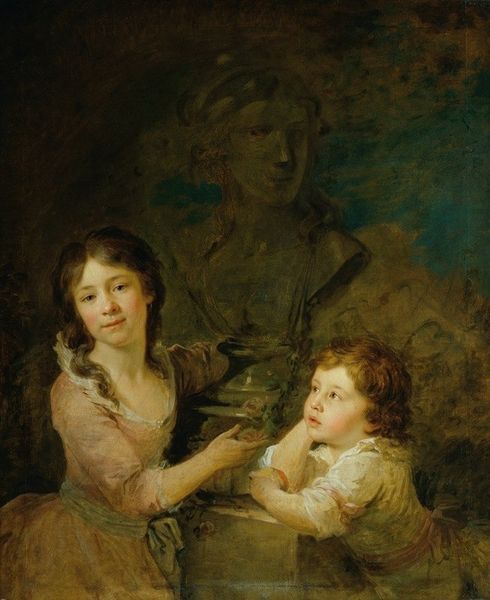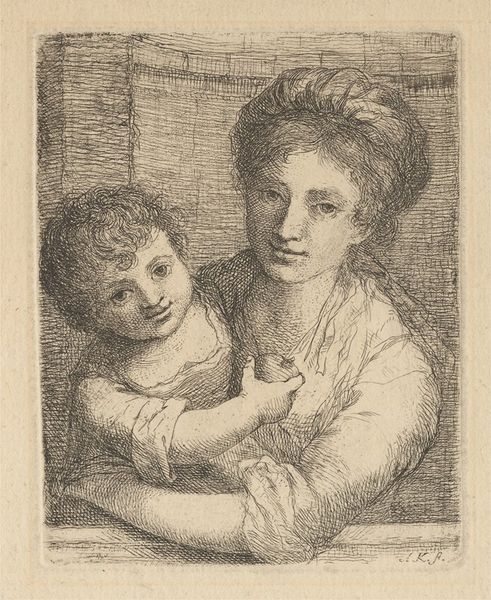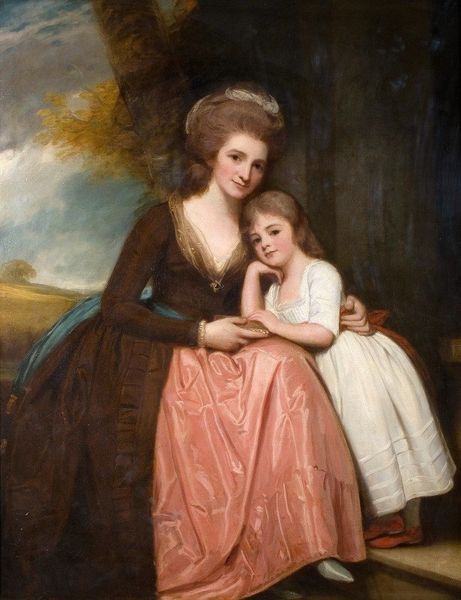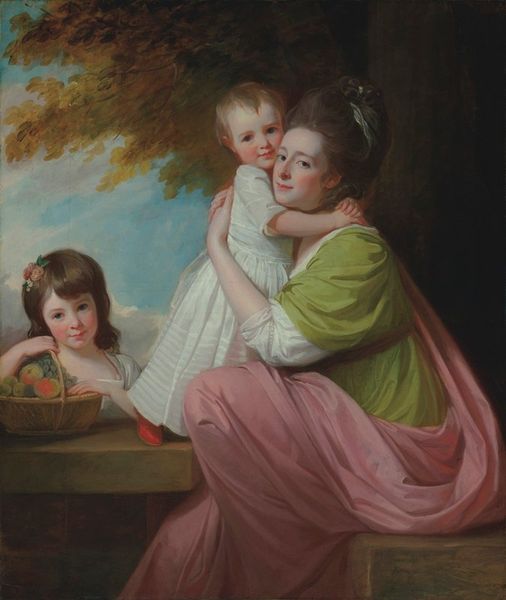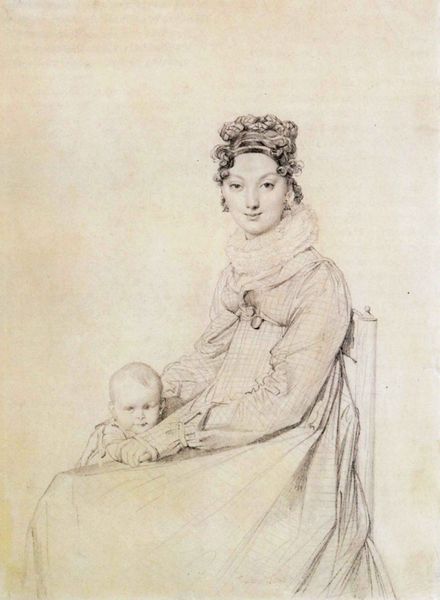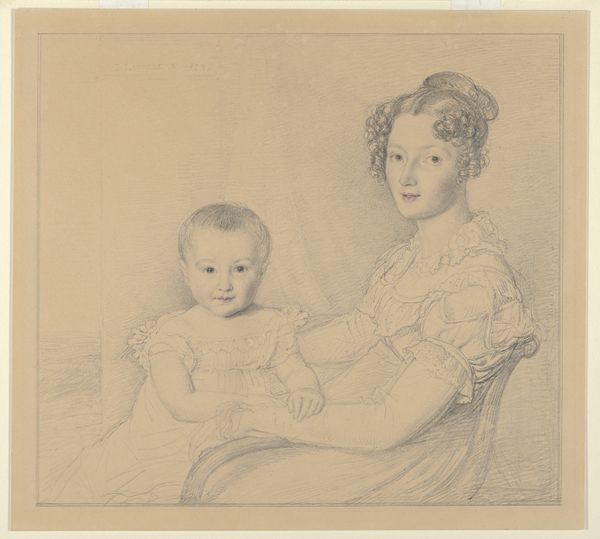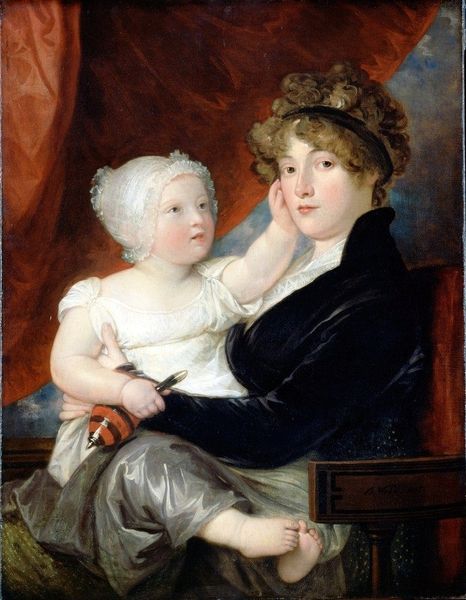
painting, watercolor
#
portrait
#
figurative
#
painting
#
watercolor
#
group-portraits
#
romanticism
#
portrait drawing
#
genre-painting
#
watercolor
Copyright: Public Domain: Artvee
Curator: This watercolor, completed in 1824 by John Linnell, presents a portrait of Mrs. William Wilberforce and her child. It's a beautiful example of early 19th-century portraiture. Editor: There’s a serenity to it, almost dreamlike. It's bathed in gentle colors, but something in her gaze feels… wistful? Like she's watching time move away from her. Curator: Indeed, Linnell’s adept use of watercolor lends a delicate transparency. Observe how the background landscape, though minimally defined, infuses the composition with a sense of spaciousness. Structurally, it contrasts her domestic role with a vast, open world. Editor: It almost feels staged. The positioning of mother and child against the landscape – is that just backdrop or some sly commentary on societal expectations and freedoms versus her duties at the time? It's so cleverly executed. Curator: Certainly, the artist uses pictorial devices such as the slightly raised vantage point to impart a specific viewpoint. The formal pose signifies a level of societal standing, echoed in the detailed rendering of her clothing, thus underscoring notions of identity and status prevalent during the Romantic era. Editor: Her gaze meets mine so frankly. There's strength there, but vulnerability too; the kind of layered self we all show the world, and hide. Also that baby is quite distracting. All big cheeks and angelic blond hair. It must have been delightful as the viewer to get a window into a family life like that at the time. Curator: To delve deeper into its composition, observe the artist's masterful play of light. Light illuminates her face, drawing the viewer’s eye to her expression. But even with what feels at once a realistic depiction, there seems to be a distinct theatrical or stylized quality. Editor: Linnell has captured an intimate narrative. He somehow made visible those silent connections. You know; I look at this and I ponder my mother…and feel this almost overwhelming sense of affection and tenderness toward her; to look at that image for minutes…it certainly achieves what it sets out to do. Curator: Precisely, an understanding of these semiotic dimensions expands our interpretation. The portrait transcends simple representation, speaking instead to more complex aspects of the subject’s internal landscape. Editor: Art like this is a bridge to those silent corners, to that tender recognition between us. I shall ponder on that image and its power.
Comments
No comments
Be the first to comment and join the conversation on the ultimate creative platform.
